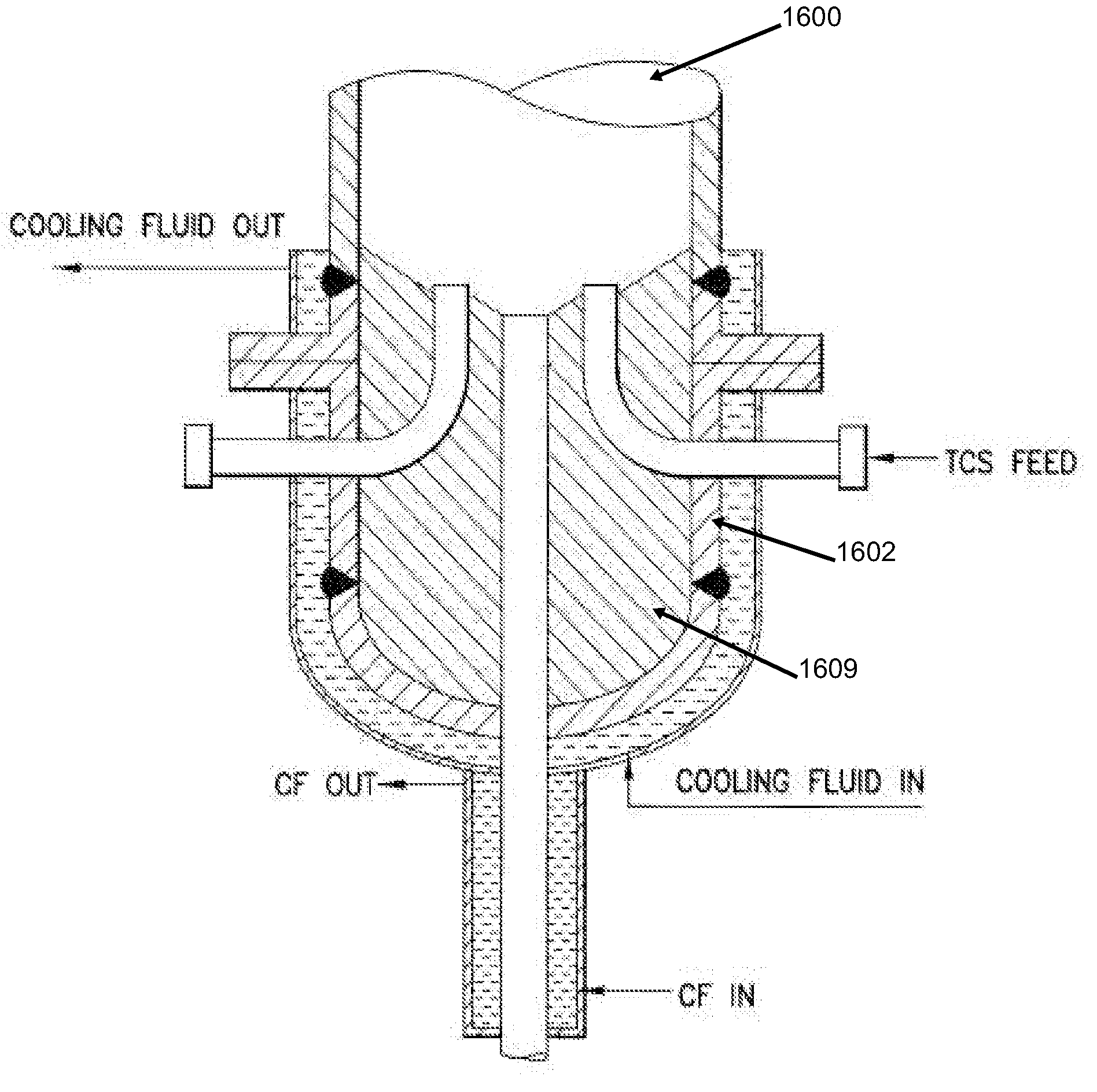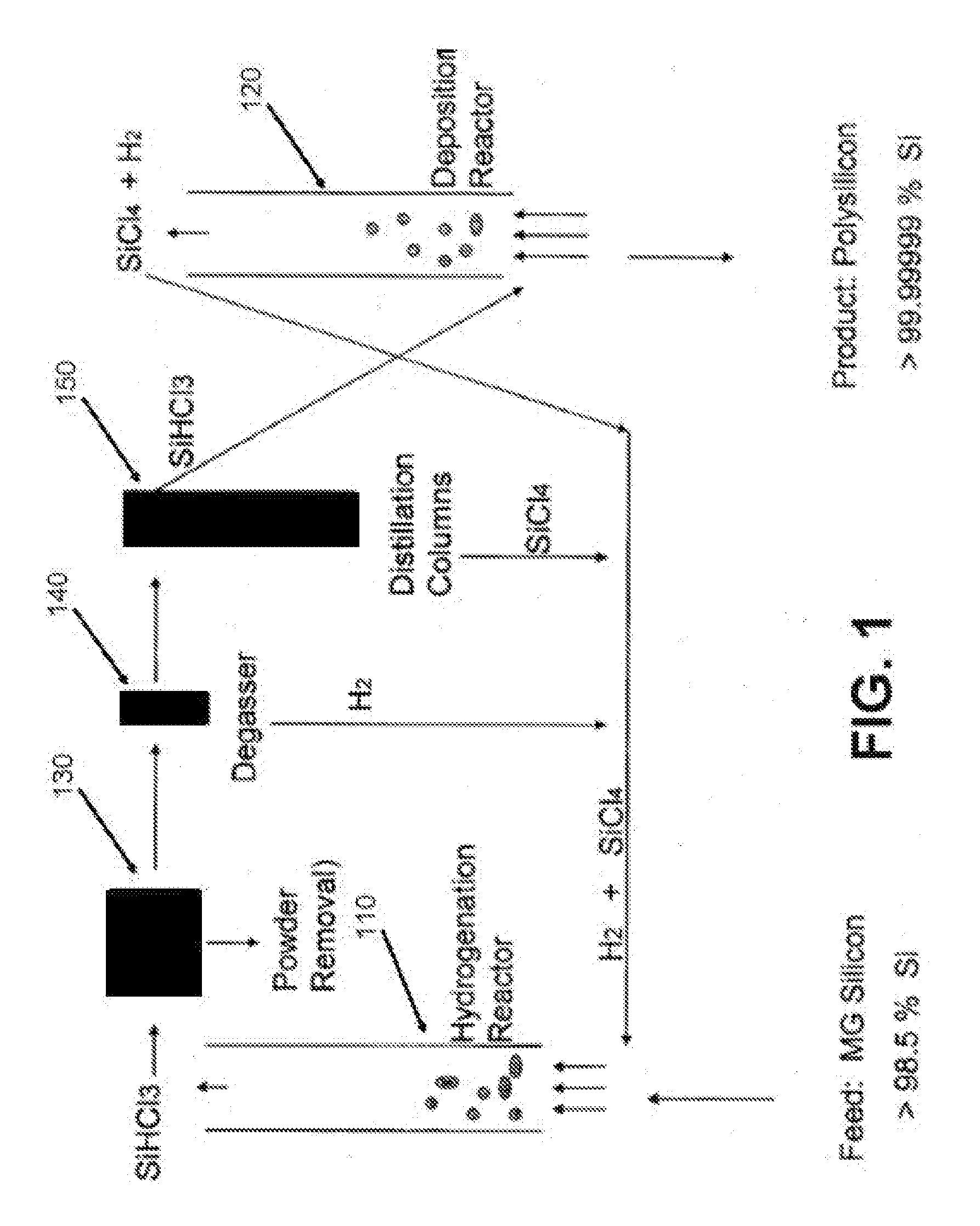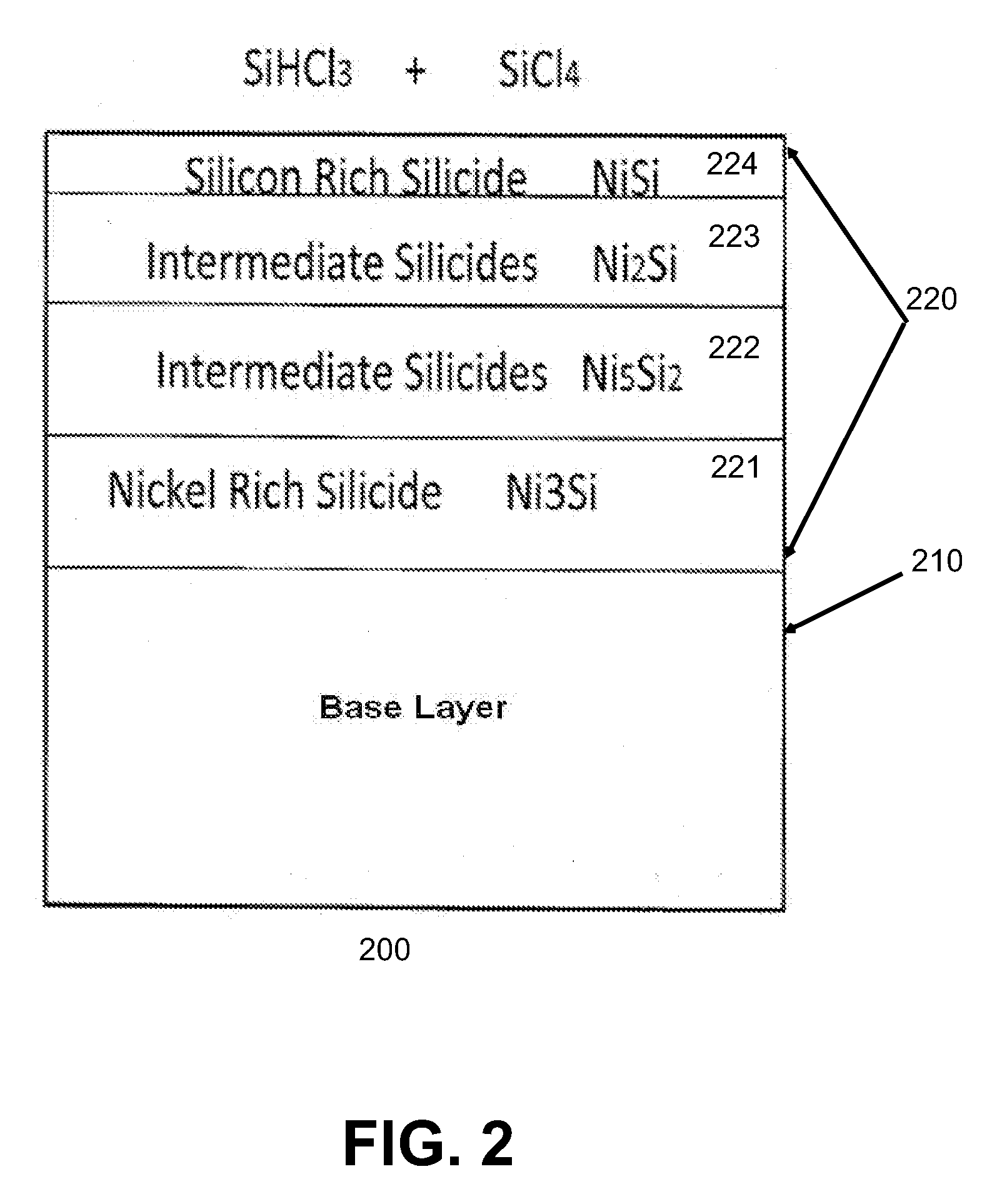Reactor with silicide-coated metal surfaces
a metal surface and metal coating technology, applied in the direction of silicon compounds, lighting and heating apparatus, furnaces, etc., can solve the problems of significant reduction of the life expectancy of such containment structures, negatively affecting conditions and efficiencies,
- Summary
- Abstract
- Description
- Claims
- Application Information
AI Technical Summary
Benefits of technology
Problems solved by technology
Method used
Image
Examples
experiment 1
Protocol for Assessing Relative Corrosion of an Alloy Exposed to Halogenated Silicone Source Gases
[0128]One example of a corrosion test utilized to determine the relative effectiveness of the alloy / inert layer combination in resisting corrosion is set forth below.
[0129]An apparatus such as that depicted in FIG. 6 is utilized. In one embodiment, the furnace 650 is a Thermcraft single zone model XST-3-0-36-1C with a 3 inch ID (230 volts 6780 watts). The tube 656 is 36 inches×3 inches with a volume of about 5 L with the end caps 651, 657. The samples sit in a quartz boat 655. Get a tare weight for the empty bubbler 660 or note the tare weight written on the tag on the bubbler 660. Fill the bubbler 660 with 150-200 ml of silicon tetrachloride. The bubbler 660 is filled by adding 60 ml of chlorosilane using a 60 ml syringe and ⅛ inch Teflon tubing several times.
[0130]If the bubbler 660 is filled, check the weight of chlorosilane. There should be at least 50 grams of chlorosilane (TCS or ...
example 2
Utilization of Certain Alloy and Halogenated Silicon Source Gases in an Assessment Of Relative Corrosion
[0147]FIGS. 7 and 8 demonstrate corrosion resistance data wherein several alloys were exposed to chlorosilanes at 850 degrees Celsius.
[0148]From several corrosion test runs depicted in FIGS. 7 and 8, it is clear that using certain alloys in conjunction with treatment with certain silicon source gases capable of reacting with said alloys to form silicide coatings facilitates manufacture of a reactor that could withstand the conditions that one would encounter in a TCS / polysilicon deposition reactor (temperatures at 850 degrees Celsius and presence of chlorosilanes).
example 3
Utilization of Certain Alloy and Halogenated Silicon Source Gases in an Assessment of Relative Corrosion, in Experimental Conditions with the Presence / Absence of Oxygen
[0149]FIGS. 9 and 10 demonstrate the use of various alloys in a corrosion resistance protocol such as that illustrated in Example 1, utilizing various permutations of alloy materials; silicone source gases capable of forming silicides with said alloys; and interior reactor conditions with and without the presence of oxygen. As demonstrated in FIG. 9, alloys in an oxygenated environment without silicide formation exposed to silicon tetrachloride demonstrated corrosion. Alloys in an oxygen-free environment exposed to silicon tetrachloride demonstrated corrosion, albeit to a lesser degree. Alloys reacting with a TCS silicone source gas so as to form a silicide on the surface of the alloy prior to introduction of a silicon tetrachloride demonstrated reduced corrosion an deposition of silicon on the silicide layer.
[0150]Re...
PUM
| Property | Measurement | Unit |
|---|---|---|
| Temperature | aaaaa | aaaaa |
| Temperature | aaaaa | aaaaa |
| Temperature | aaaaa | aaaaa |
Abstract
Description
Claims
Application Information
 Login to view more
Login to view more - R&D Engineer
- R&D Manager
- IP Professional
- Industry Leading Data Capabilities
- Powerful AI technology
- Patent DNA Extraction
Browse by: Latest US Patents, China's latest patents, Technical Efficacy Thesaurus, Application Domain, Technology Topic.
© 2024 PatSnap. All rights reserved.Legal|Privacy policy|Modern Slavery Act Transparency Statement|Sitemap



